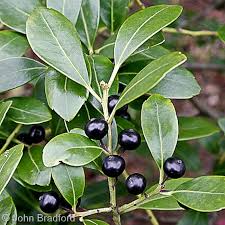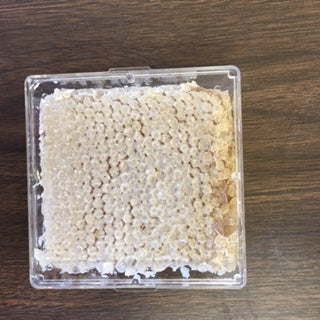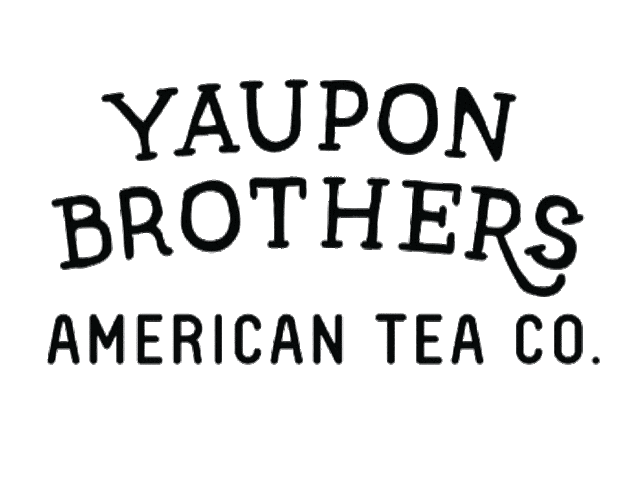
- Doug McGinnis is a veteran beekeeper and honey expert from New Smyrna Beach, FL. Doug was head of the Tropical Blossom Honey Co., which was founded by his father in 1940, until the company was sold in 2015. Doug has served for nine years on the National Honey Board, and has been an officer in the National Honey Packers and Dealers Association, as well as the American Beekeeping Federation. He is a board member at the Atlantic Center for the Arts, and assisted efforts to open the UF/IFAS Honey Bee Research and Extension Lab in Gainesville, FL.
For beekeepers in Central and Northern Florida and Southern Georgia, yaupon holly plays an important part in the cycle of supplying hungry honeybees with nectar prior to the late spring main honey flows.
Our family company, Tropical Blossom Honey Co., raised bees and packed honey from Florida beekeepers from 1940 to 2015. We kept a honey extraction facility that allowed beekeepers to remove honey from combs full of orange blossom honey to get their hives ready for nectar flows from saw palmetto and gallberry.
Prior to these main flows, early-blooming hollies such as yaupon, American holly (Ilex opaca), giant or high-bush gallberry (Ilex coriacea) and Dahoon holy (Ilex cassine), bloom and produce nectar and pollen, which ensures healthy bee brood populations.
These early hollies do supply a little honey surplus, but it is gallberry (Ilex glabra), that produces abundant, lucrative honey crops for beekeepers.
Gallberry (also called inkberry)is named for the black berries it produces, instead of the red ones common in other species. Unless you are from the Deep South, chances are you've never heard of gallberry honey. Many tourists refer to it as “that gallbladder honey”.
Yet gallberry honey is one of the USA's most exquisite honey varieties. Light, bright and floral, it has unique properties that make it highly desirable to honey blenders around the globe.
Gallberry honey retains some of the highest values of an enzyme called diastase (dietary amylase). This is an enzyme in the bees honey stmachs that converts nectar's sucrose into simpler sugars. The less processing and heating natural honey is subjected to, the more diastase it will have.
Before the creation of the EU at the turn of the century, a few USA honeys were very popular in Europe--gallberry being one of them. We sold hundreds of tons of gallberry honey to European honey packers so they could increase the amount of diastase in their own blends. Regulations set by the European Codex Alimentarius required that a certain minimum level of diastase be in all honey sold in Europe.
There is still another quality of gallberry honey that makes it special--it is very slow to granulate. This is because of its very high percentage of simpler sugars--39 to 40 per cent. Clover honey, which granulates quickly, has about 28 per cent, whereas tupelo honey, which rarely granulates, has about 45 per cent,
Because of this and its abundant honey flows, gallberry is the best nectar source for honeycomb. The craft of producing honeycomb in bulk is shared by only a handful of beekeeping families and has been passed down through generations.
Not only must the gallberry nectar flow be strong (it's a swamp plant, and an old saying is "feet in water, arms in sunshine" if there is to be a good flow), but the honeycomb frames must be rotated in every hive frequently, so the bees fill the combs evenly with nectar. It's a tedious process, so no wonder honeycomb demands a premium price.


Gallberry in fruit and flower, (Ilex glabra), photo Florida Native Plant Society
Honeycomb and chunk honey (liquid honey containing a chunk of honeycomb in the jar) is highly valued in diverse cultures and part of many culinary traditions. We sold millions of pounds of it throughout the globe, to Europe, the Mideast, Japan and Canada.
Before the 1970s, the area between Bunnell and Palatka, FL, was considered "the gallberry woods". Development pressure in the area resulted in thousands of acres of low-lying real estate to be drained. Today, "the gallberry woods" is considered to be along the St. Mary's River along the Florida-Georgia border. Many of the traditional honeycomb craft producers live around Homerville, GA.
I was honored in the late '90s to help nominate gallberry honey into the Slow Food Groups Ark of Taste. Documenting and promoting indigenous and endangered foods, gallberry resides in the Ark with just a few other USA honeys. Just like in the past, gallberry faces threats to its future. While development is still there, today timber companies, which allowed gallberry to grow freely as an understory plant in pine plantations, are today spraying herbicides to create clear pathways between rows. That and erratic weather patterns are convincing beekeepers to find other outlets for their beehives, such as pollination services.

Tropical Blossom Honey Co., photo Daytona Beach News-Journal
And now, a recipe!
Gallberry Honeycomb and Cheese Platter
Here's an easy appetizer that will be the hit of the party:

Using a knife warmed by running it under hot water, slice a 12-oz. block of honeycomb into 3/4 inch squares. Arrange cubes of a mix of your favorite cheeses (I like cheddar, gouda, mozzarella, Swiss, but it's up to you) in the middle of the platter, surround with fruit slices (melon cubes, apple slices, pineapple, strawberries, clusters of seedless grapes, etc.), then top with the honeycomb cubes and drizzle any honey left from the block). Have some tongs so that everyone can scoop out every delicious morsel.
And here's a few of Doug's videos!

